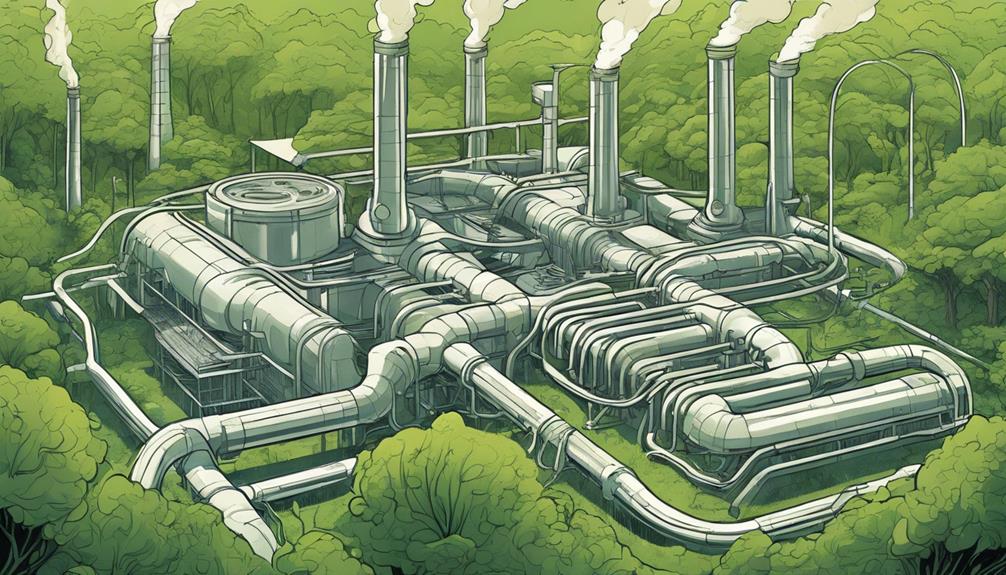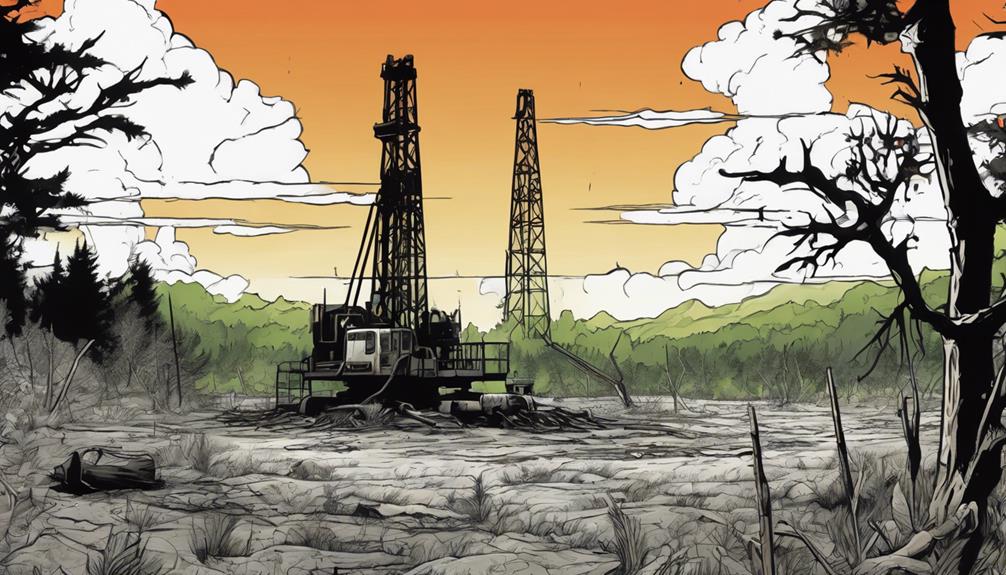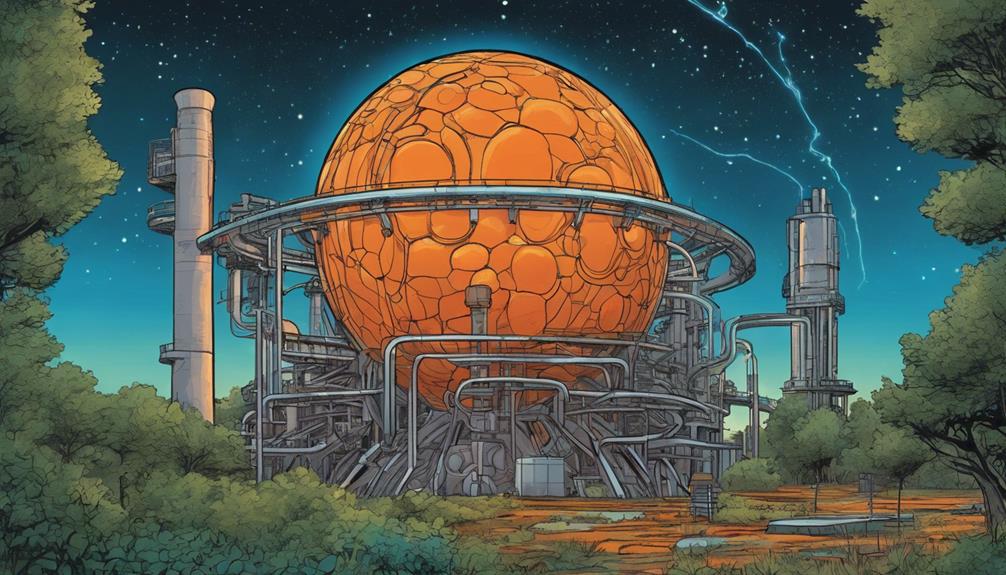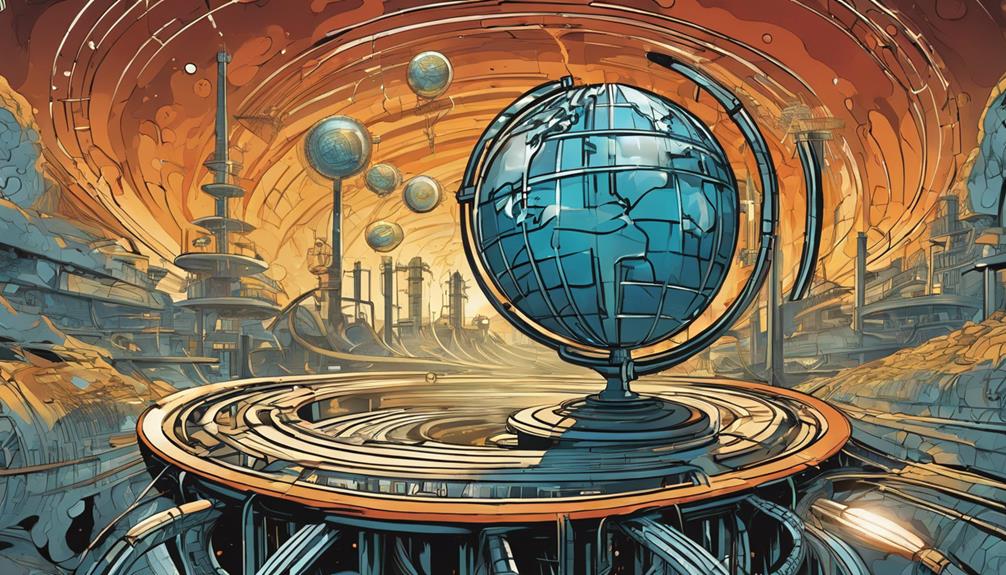As we endeavor to shift to a more sustainable energy landscape, tapping into geothermal energy's vast potential is essential, and doing so requires overcoming the challenges that have long impeded its widespread adoption. We're leveraging advanced technologies and optimized system design to enhance geothermal energy conservation. However, limited public awareness, regulatory barriers, and high upfront costs have slowed progress. To overcome these hurdles, we need to streamline permitting processes, develop innovative financing models, and invest in research and development. By addressing these challenges directly, we can unleash geothermal energy's full potential and create a more sustainable future – and that's just the beginning of what's possible.
Key Takeaways
- Leveraging advanced technologies and optimized system design enhances geothermal energy conservation and minimizes environmental impact.
- Regulatory barriers and complex permitting processes must be simplified to encourage investments and expedite project implementation.
- Innovative financing models and government-backed incentives can overcome high upfront costs and drive widespread adoption.
- Targeted outreach programs and online resources can increase public awareness and education, promoting geothermal energy adoption.
- Advancements in technology and collaboration between stakeholders can harness geothermal energy more efficiently and effectively.
Conservation Methods and Technologies

By leveraging advanced technologies and optimized system design, we can greatly enhance geothermal energy conservation through efficient heat extraction techniques, advanced reservoir management, and regular maintenance. These methods allow us to maximize energy output while minimizing environmental impact.
For instance, smart grid technologies enable us to optimize energy distribution, reducing losses and increasing overall efficiency. Additionally, research and development drive innovative conservation technologies, such as enhanced geothermal systems and closed-loop geothermal systems.
Overcoming Challenges and Barriers

Despite the numerous benefits of geothermal energy conservation, we're faced with a range of challenges that hinder its widespread adoption and implementation. As we endeavor to make geothermal energy a more significant contributor to our global energy mix, we need to tackle these obstacles head-on.
Here are three key challenges we need to overcome:
- Limited public awareness and education: Many people don't understand the benefits of geothermal energy, making it essential to launch public awareness campaigns to educate them about its advantages.
- Regulatory barriers and complex permitting processes: We need to simplify and streamline these processes to encourage more projects and investments.
- Insufficient financing options: We must develop innovative financing models to help mitigate the high upfront costs associated with geothermal energy projects.
Future Prospects and Innovations

As we look to the future, our ability to harness geothermal energy more efficiently and effectively will depend on the development and implementation of innovative technologies and conservation methods.
We're confident that advancements in technology will open up new possibilities for geothermal energy conservation. Collaboration between stakeholders and policymakers will be essential in driving initiatives forward. Increased investments in research and development will lead to groundbreaking solutions.
We envision a future where geothermal energy is seamlessly integrated into national energy policies, accelerating its adoption and reducing our reliance on fossil fuels. By working together, we can overcome the challenges holding us back and tap into the full potential of geothermal energy conservation.
Addressing Key Conservation Issues

Now that we've explored the promising future of geothermal energy conservation, we need to tackle the specific issues hindering its widespread adoption and efficient implementation.
As we examine the challenges, it's evident that addressing these key conservation issues is vital. Here are three critical areas that require our attention:
- Lack of public awareness and education: We need to launch targeted outreach programs to educate people about the benefits and importance of geothermal energy conservation.
- Regulatory barriers and complex permitting processes: Simplifying these processes will help reduce the bureaucratic hurdles that hinder project implementation.
- Technological challenges in system design and maintenance: Investing in research and development will help optimize system design and maintenance, reducing costs and increasing efficiency.
Strategies for Widespread Adoption

To expedite the shift to geothermal energy conservation, we must develop and implement effective strategies that overcome the existing barriers and make this renewable energy source more accessible and appealing to a broader audience.
| Strategy | Description |
|---|---|
| Education and Awareness | Public outreach programs, workshops, and online resources to educate consumers about geothermal energy benefits and conservation practices. |
| Financial Incentives | Government-backed loans, grants, and tax credits to offset high upfront costs and encourage adoption. |
| Streamlined Permitting | Simplified and standardized permitting processes to reduce bureaucratic hurdles and expedite project implementation. |
| Technological Advancements | Research and development of innovative, efficient, and cost-effective geothermal energy systems and components. |
Frequently Asked Questions
How Does Geothermal Energy Compare to Other Renewable Energy Sources?
When we compare geothermal energy to other renewable sources, we find it stands out for its reliability and baseload capabilities, offering a consistent and stable supply of clean energy, unlike intermittent sources like solar and wind.
Can Geothermal Energy Be Used for Industrial Processes Beyond Heating and Cooling?
As we explore into the depths of geothermal energy, we find a hidden treasure trove of possibilities. Yes, we can harness its power beyond heating and cooling, fueling industrial processes like food processing, paper mills, and even textile manufacturing.
Are Geothermal Systems Suitable for Small-Scale, Residential Applications?
'We believe geothermal systems can be suitable for small-scale, residential applications, offering efficient heating and cooling, and even powering appliances, but compact design and cost-effectiveness are essential for viability.'
How Does Geothermal Energy Impact Local Ecosystems and Wildlife Habitats?
We've found that geothermal energy can have both positive and negative impacts on local ecosystems and wildlife habitats, depending on the project's design, location, and operation, with careful planning mitigating potential harm.
Can Geothermal Energy Be Stored for Later Use, or Is It Solely Real-Time Generation?
Like a treasure chest overflowing with possibilities, we find that geothermal energy can be stored for later use through thermal energy storage systems, allowing us to tap into it when needed, not just in real-time.
How Can Geothermal Energy Conservation Overcome Challenges and Provide Future Solutions for Diverse Applications?
Geothermal energy applications unlocked are paving the way for sustainable and efficient energy solutions. By focusing on conservation efforts, such as utilizing heat pumps and deep drilling techniques, we can overcome challenges and harness this abundant resource for diverse applications. This will help meet the growing energy demands while reducing environmental impact.
What Role Does 3D Modeling Play in Revolutionizing Geothermal Conservation and Overcoming Challenges?
Geothermal energy modeling techniques play a crucial role in revolutionizing geothermal conservation. By utilizing advanced 3D modeling, engineers and scientists can accurately predict reservoir behavior and overcome challenges such as heat loss and fluid flow. These techniques are essential for optimizing geothermal energy production and sustainability.
What Challenges and Solutions are Involved in Geothermal Conservation and Development?
Geothermal energy development timeline jigsaw presents unique challenges. One obstacle is the high upfront costs of drilling and infrastructure. Finding suitable sites is another hurdle. However, advancements in technology and exploration techniques offer solutions. Improved mapping and drilling methods have helped overcome these barriers, making geothermal energy more feasible.
Conclusion
As we stand at the threshold of a geothermal revolution, it's striking that the very earth beneath our feet holds the key to a cleaner, more sustainable future. Coincidentally, the same heat that forged our planet can now power our homes, industries, and economies.
By tackling the challenges and seizing the opportunities, we can access geothermal energy's full potential, ensuring a future where our planet's natural warmth becomes the backbone of our global energy mix.










